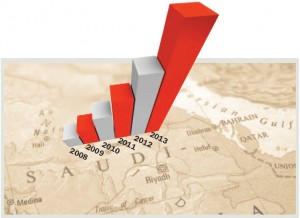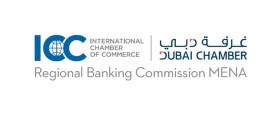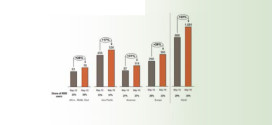 Gulf banks are expected to continue their steady recovery from the 2008 crisis and remain isolated from eurozone turmoil for the rest of 2012 and 2013, according to a Standard & Poor’s Ratings Services report.
Gulf banks are expected to continue their steady recovery from the 2008 crisis and remain isolated from eurozone turmoil for the rest of 2012 and 2013, according to a Standard & Poor’s Ratings Services report.
“We believe the trend of declining loan loss provisions will continue for most of the banks in the Gulf Cooperation Council, resulting in further recovery in reported net profits despite adverse conditions in the eurozone and international banking markets,” said Standard & Poor’s credit analyst Timucin Engin.
Since the start of the global financial crisis in 2008 and despite slower balance sheet growth, most Gulf Cooperation Council (GCC) banks have maintained healthy earnings generation before provisioning. Even though pockets of risk persist, asset quality continues to improve, and, as a result, banks do not need to set aside as many provisions to cover their loan losses. This trend of better asset quality and lower loan loss provisions is fuelling the improvement in earnings at most Gulf banks.
“We don’t expect the eurozone turmoil to have a big direct impact on the GCC banks because their net funding dependence on European banks, and external funding in general, is largely limited and manageable, in our view. European banks have traditionally been fund providers in international credit markets and they are now contracting their overseas exposures as they are trying to preserve liquidity and capital in line with increasing regulatory requirements and the challenges in the eurozone.”
“GCC banks’ lending and investment exposures to the eurozone are also very limited and their high levels of capital are also a major strength, and provide an important cushion against unforeseen stress on asset quality,” said Standard & Poor’s credit analyst Paul-Henri Pruvost.
Apart from Bahrain (BBB/Negative/A-3), other GCC members have remained largely insulated from the spillover effects of the political turmoil in other parts of the Middle East and North Africa. The other five countries that make up the GCC are the UAE (not rated), Saudi Arabia (AA-/Stable/A-1+), Oman (A/Stable/A-1), Qatar (AA/Stable/A-1+) and Kuwait (AA/Stable/A-1+).
The report adds, “The outlook for lending growth in Kuwait and the UAE remains limited, but is healthy for Saudi Arabia, Qatar, and Oman. For most GCC banks, funding profiles have improved visibly in the past few years on the back of declining balance sheet growth.”
 Cash And Trade Magazine For Cash and Trade professionals in the Middle East
Cash And Trade Magazine For Cash and Trade professionals in the Middle East





One comment